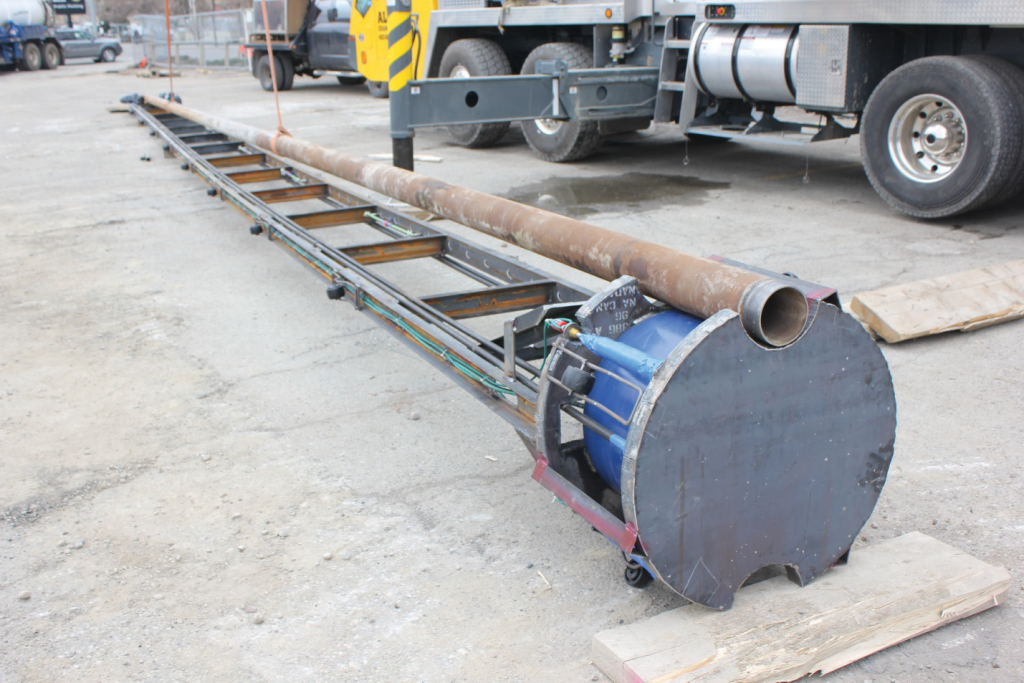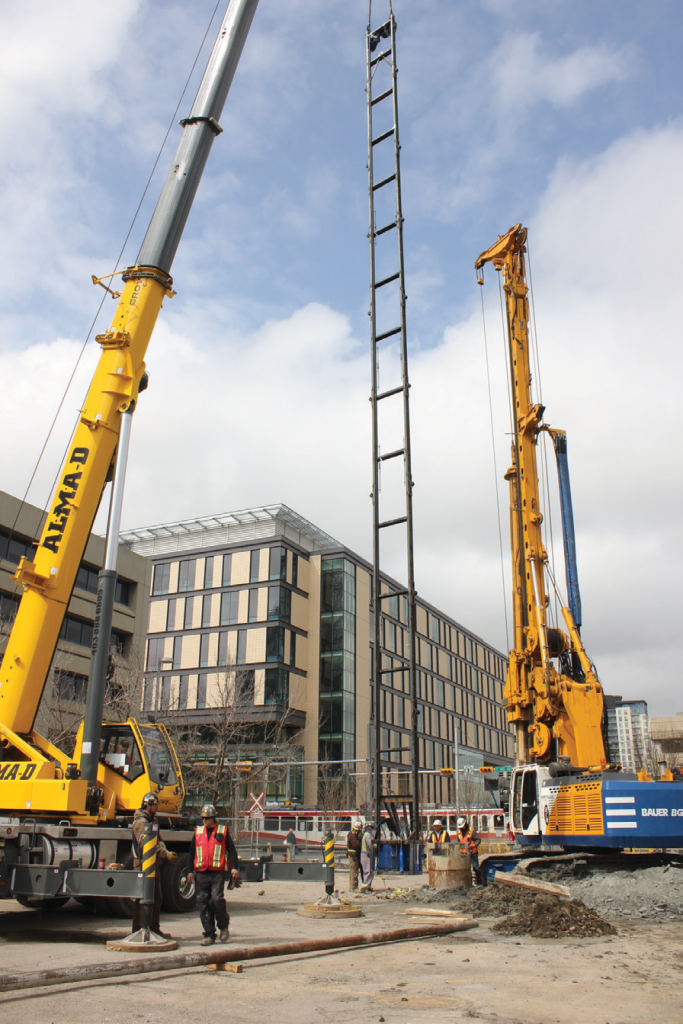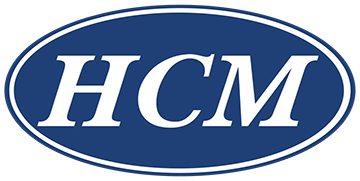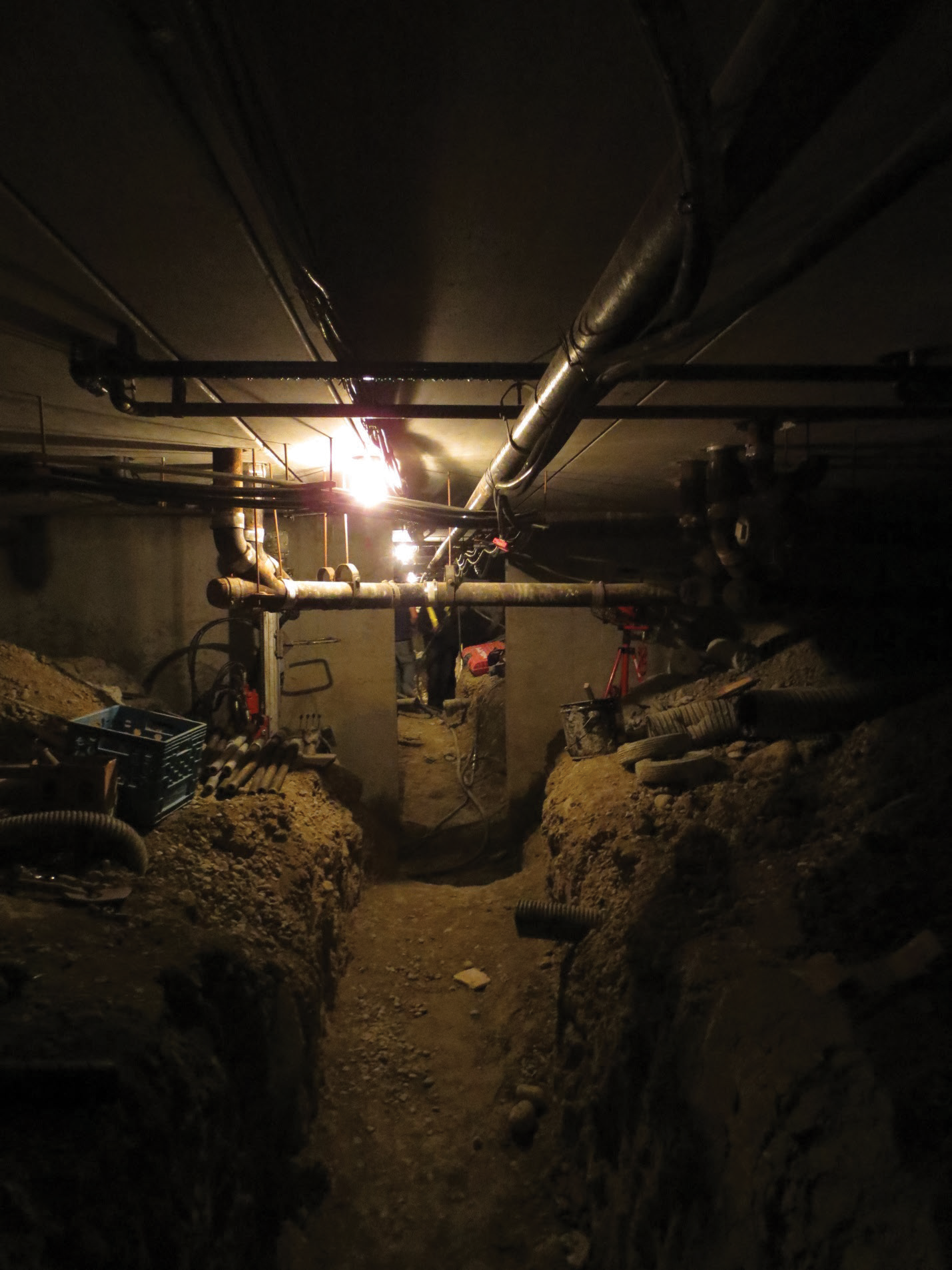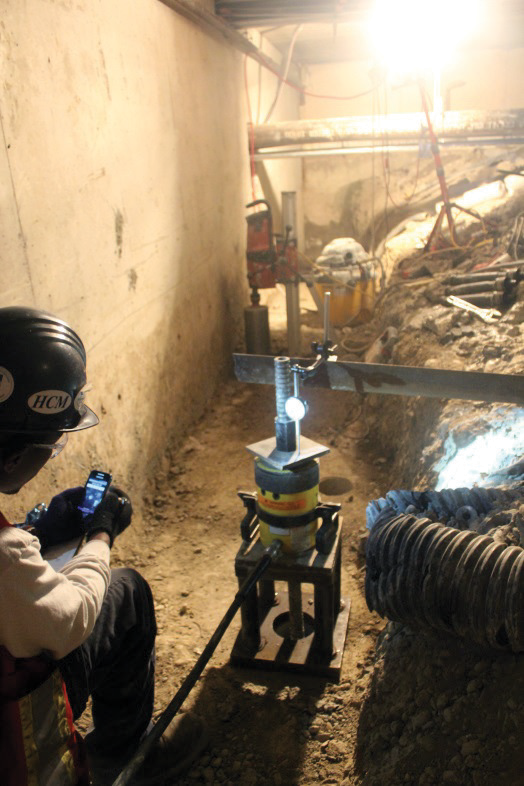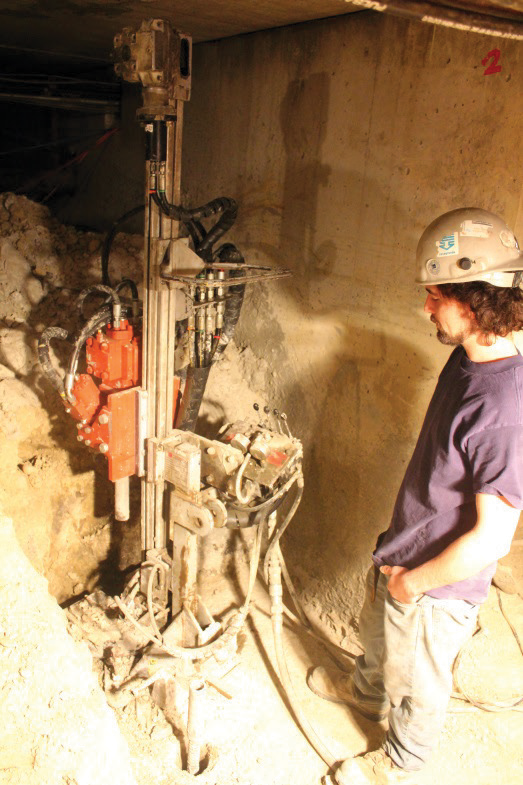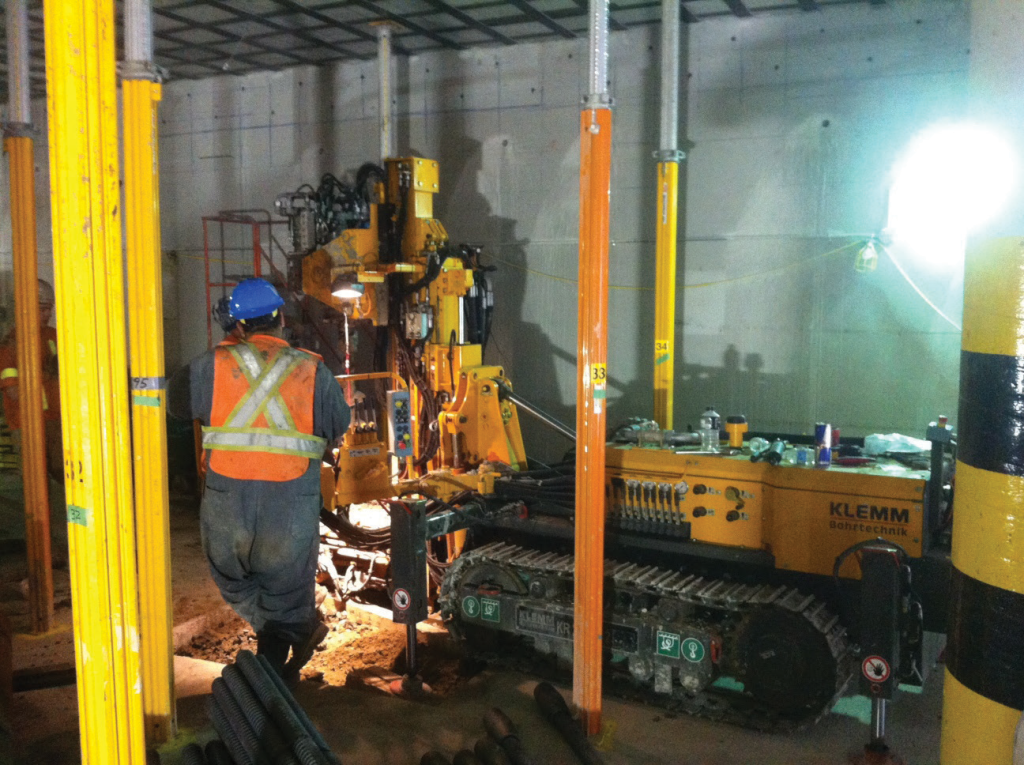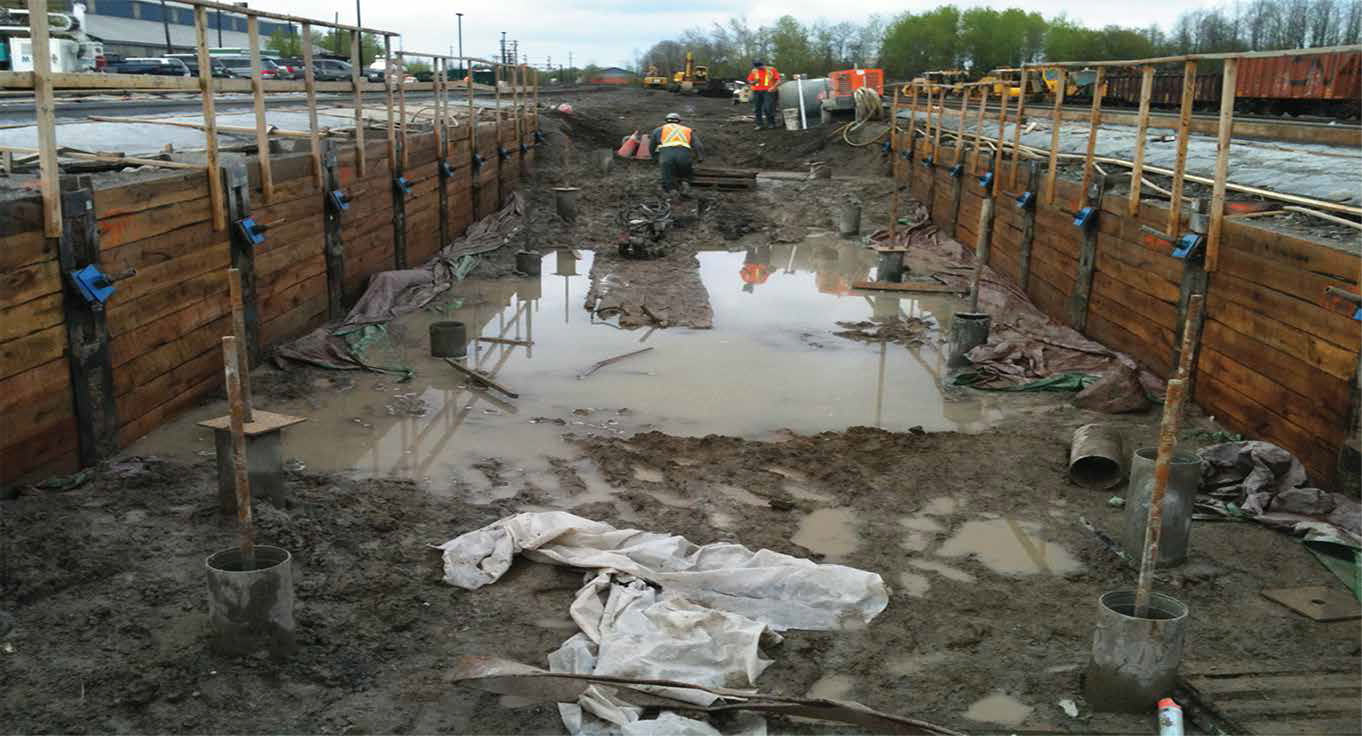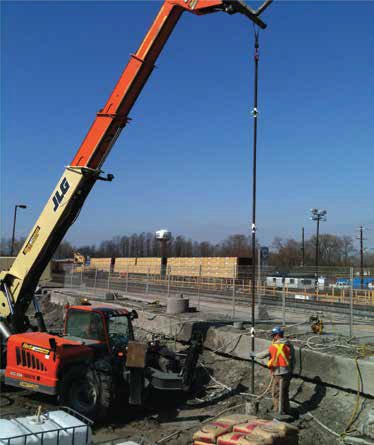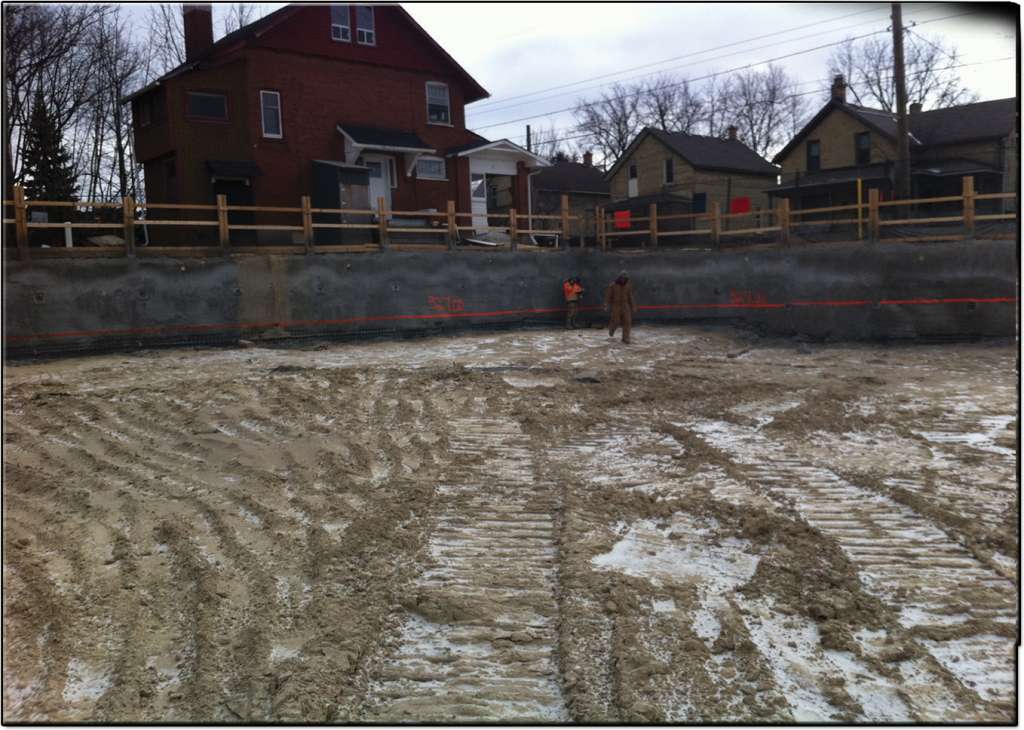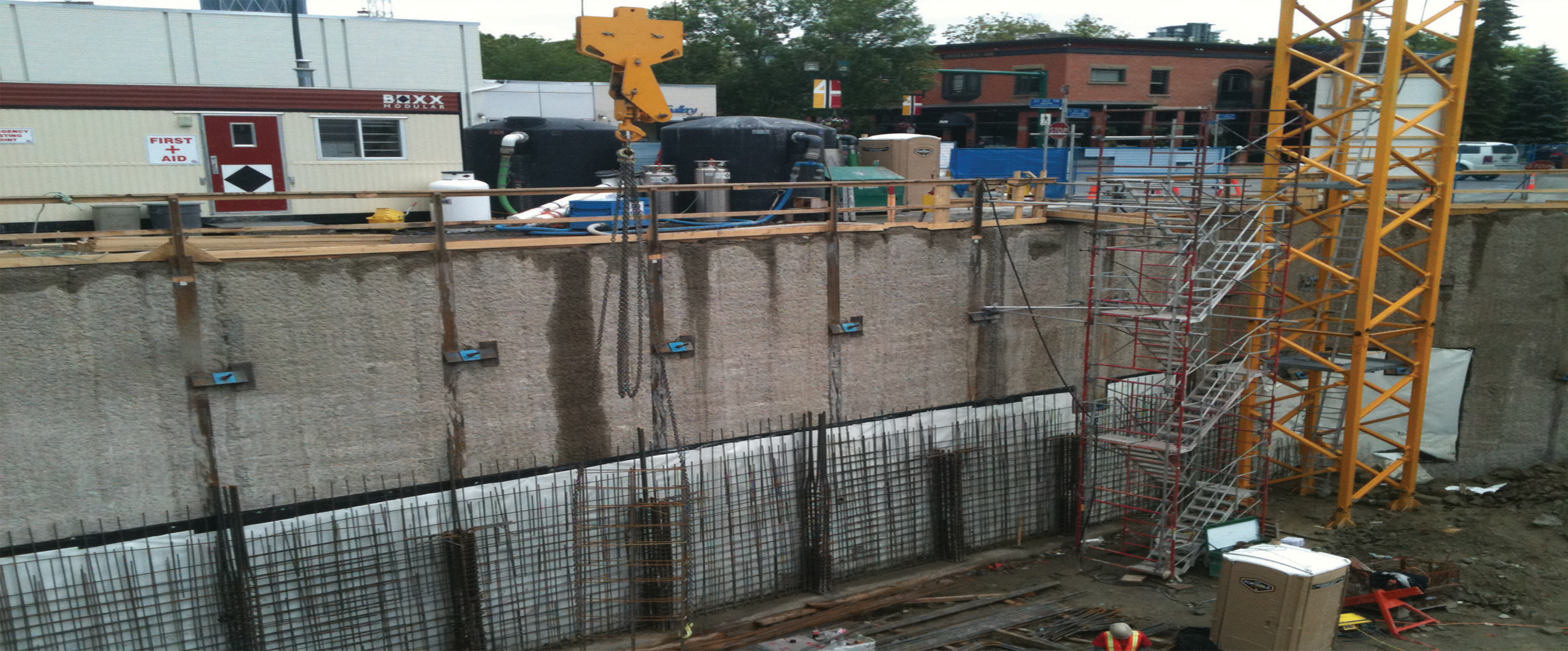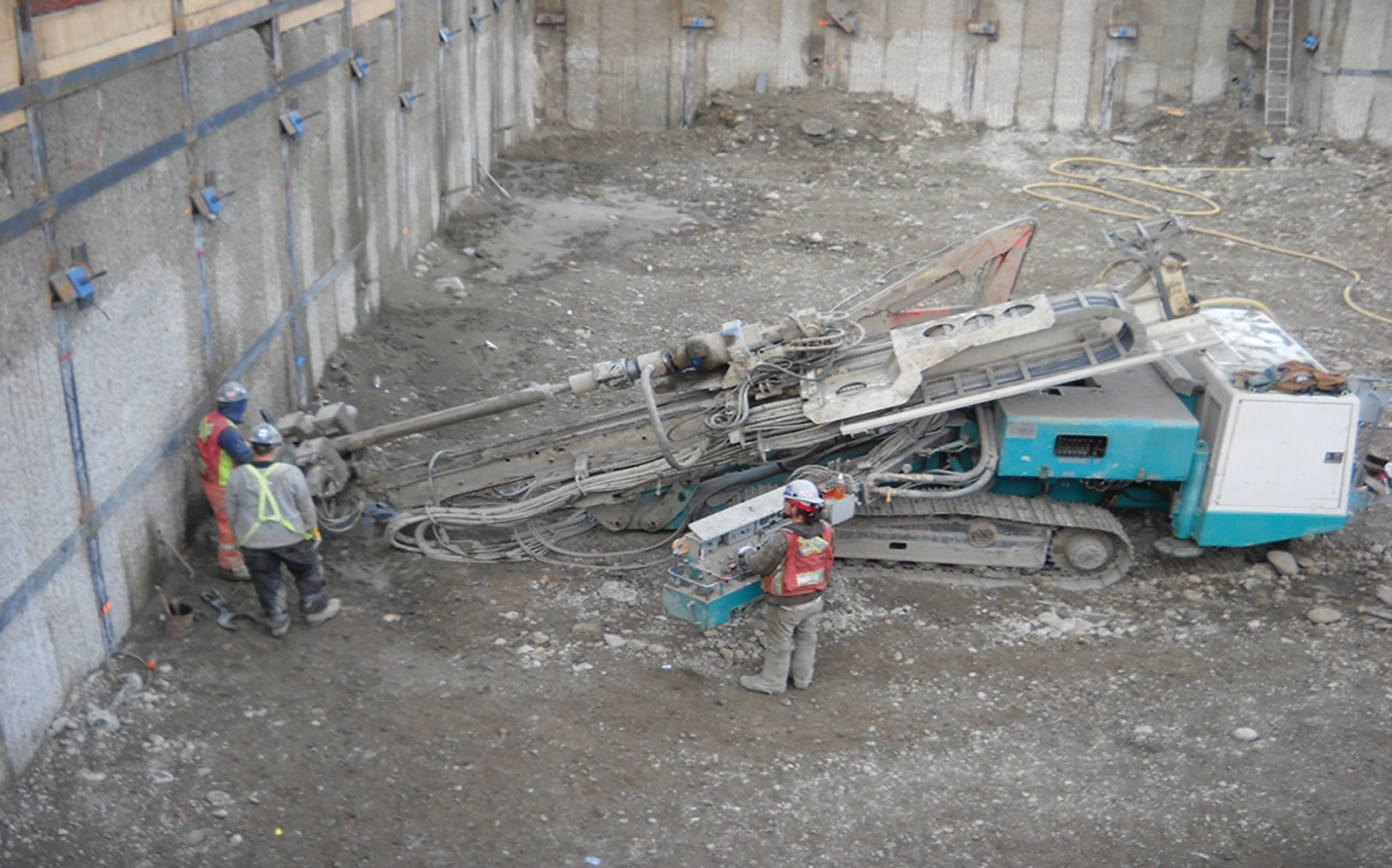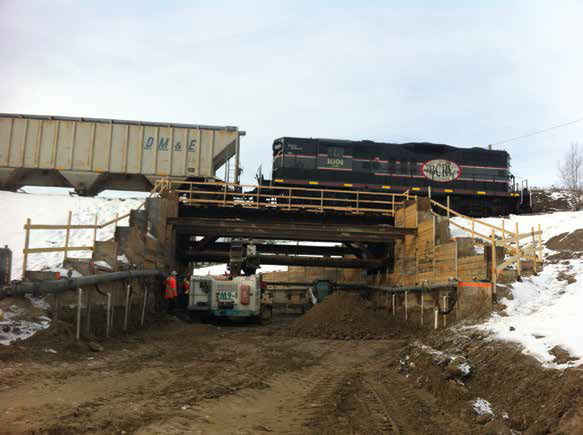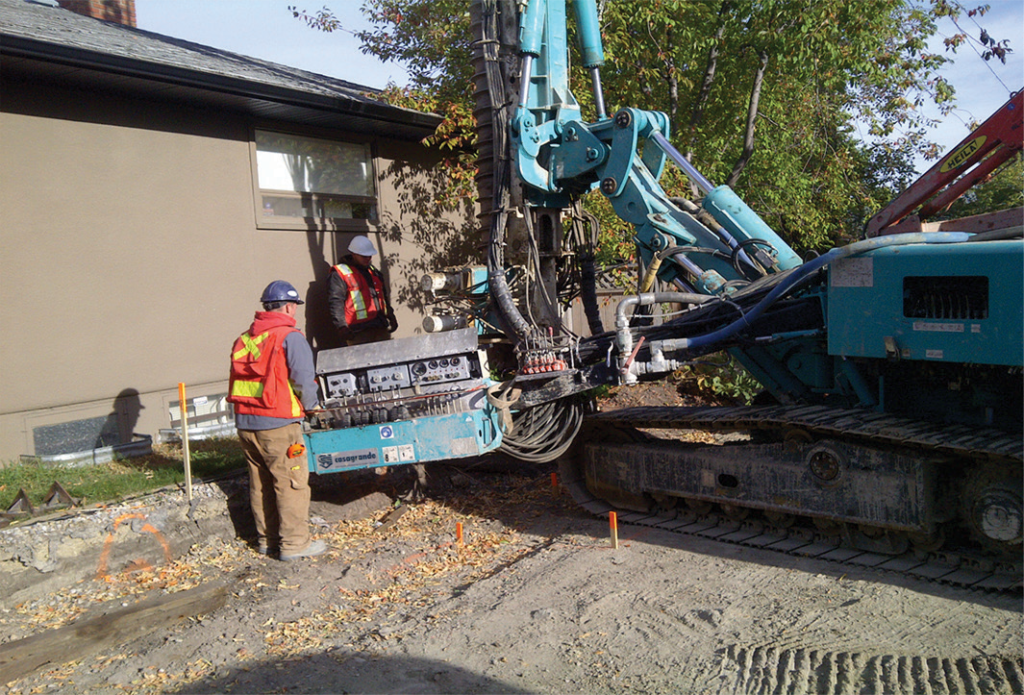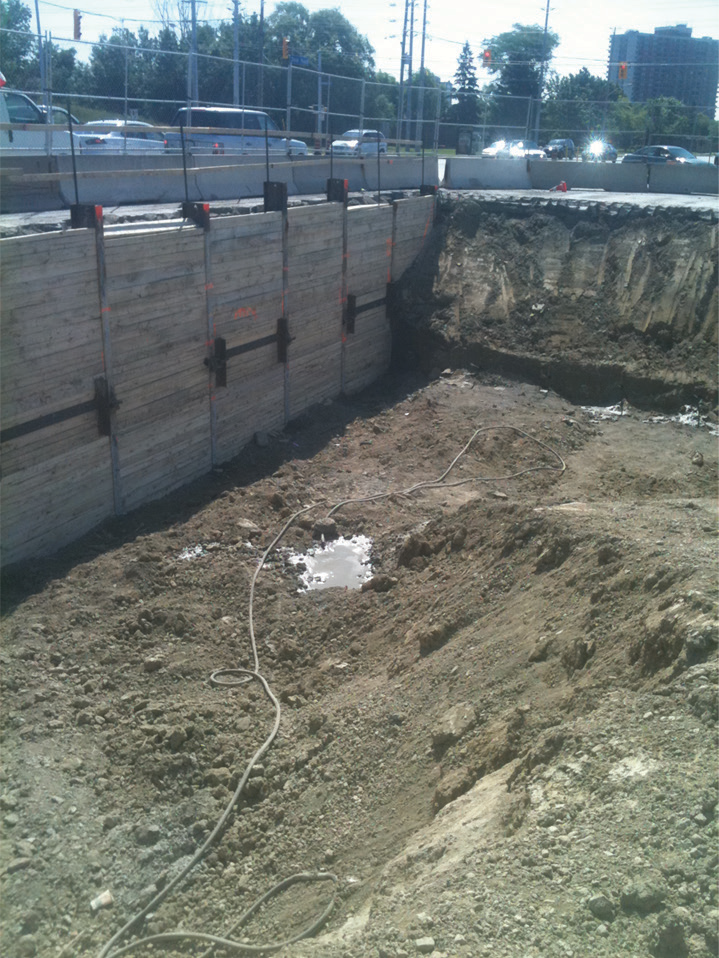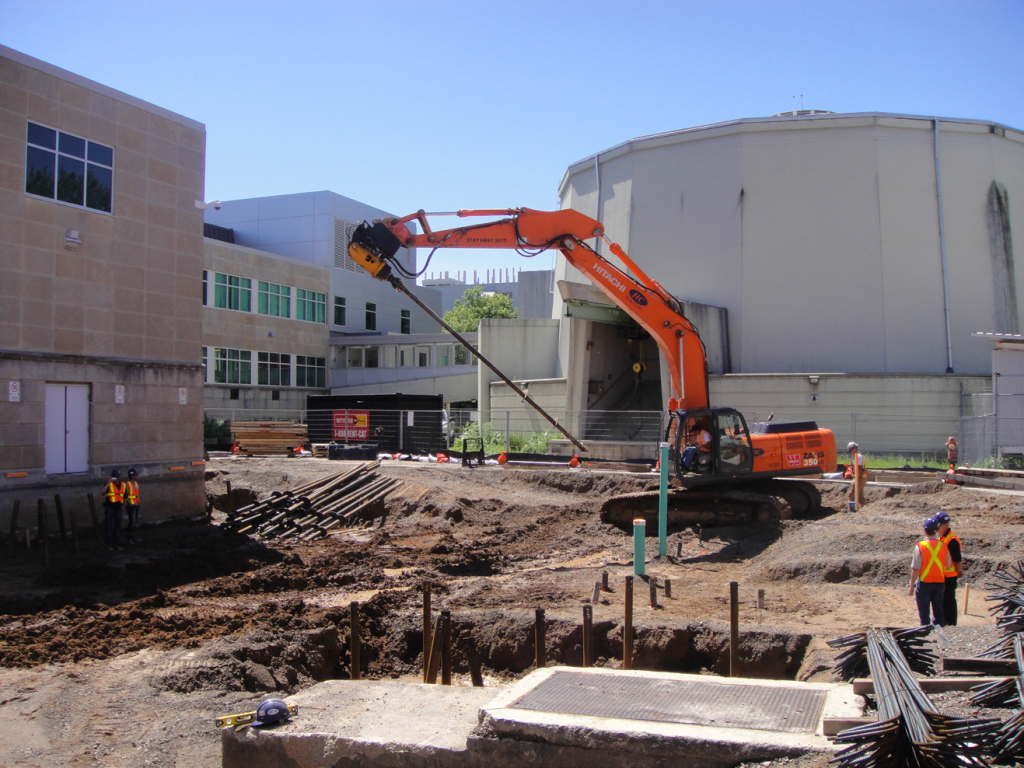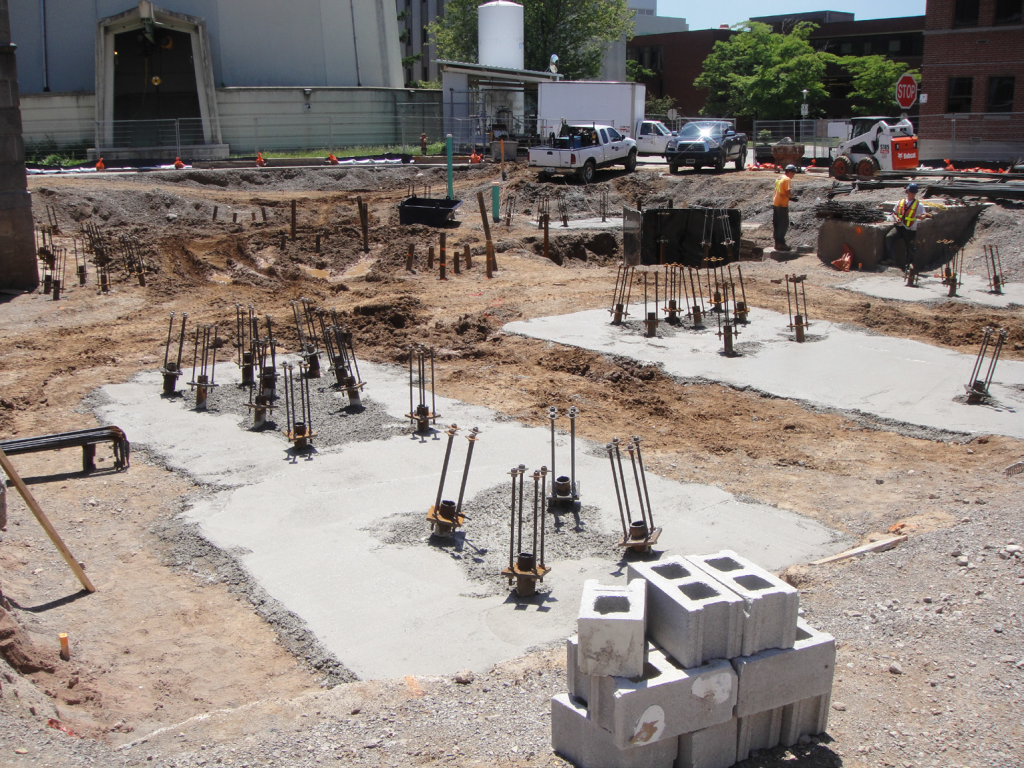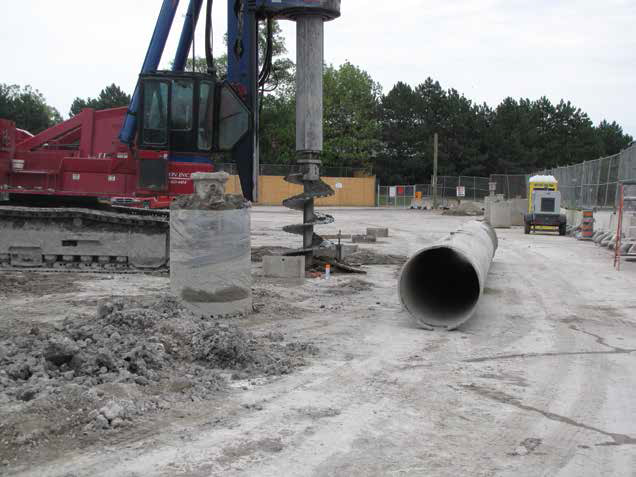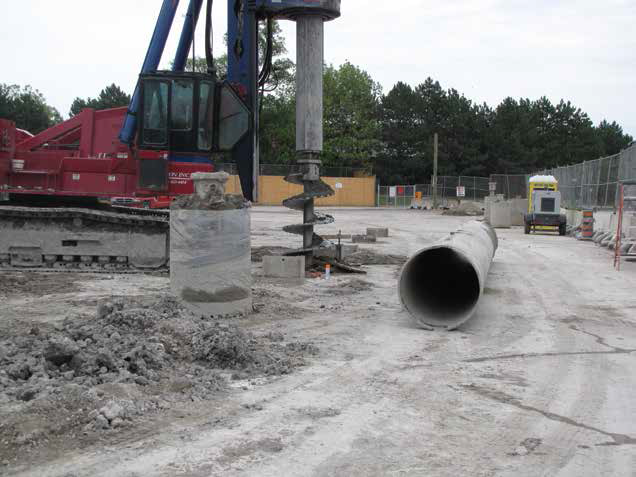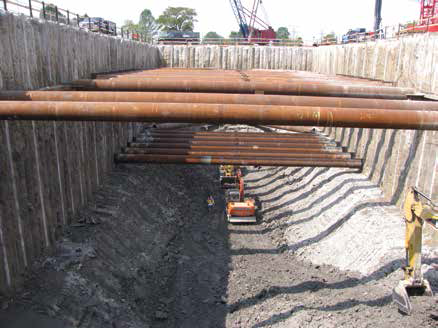The Osterberg Cell
HCM was contracted to provide supply & installation of O-Cell load test on the New Calgary Library project located in downtown core of the city, in close proximity to the City Hall. The outcome of the load test was to determine the actual soil parameters for the foundation pile design on the project.
The O-cell is a hydraulically driven, high capacity, sacrificial loading device installed within the foundation unit. As the load is applied to the O cell, it begins working in two directions; upward against upper side shear and downward against base resistance and lower side shear (if applicable). Each O-cell is specially instrumented to allow for direct measurement of the O-cell’s expansion. O-cells range in capacities from 800 kN to 26,000 kN.
The scope of work consisted in installation of single test pile (1070mm diam. x 8.0 meters top liner casing, 910mm diam. x 8.0 meters rock socket). The overall length of test pile was approx.16 meters. O-cell was attached to the bottom of the steel frame c/w instrumentation connections, gauges, wiring etc.
Steel frame was manufactured in HCM’s shop, the O-cell was supplied by Loadtest Inc. HCM installed the pile in one day according to the timeline and specification requirements.
Client: Tetra Tech EBA
Location: Calgary, Alberta
